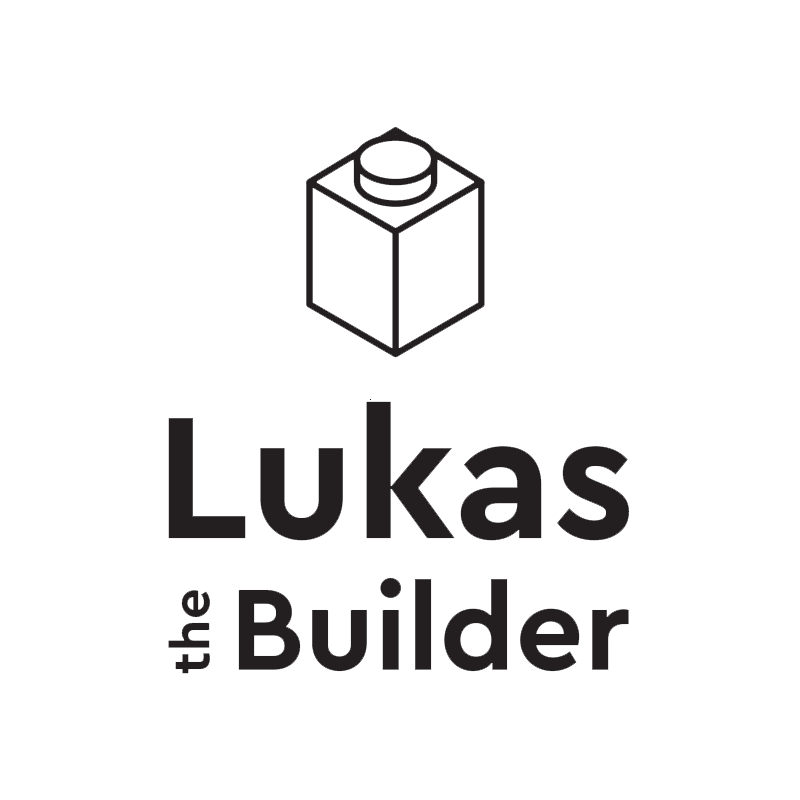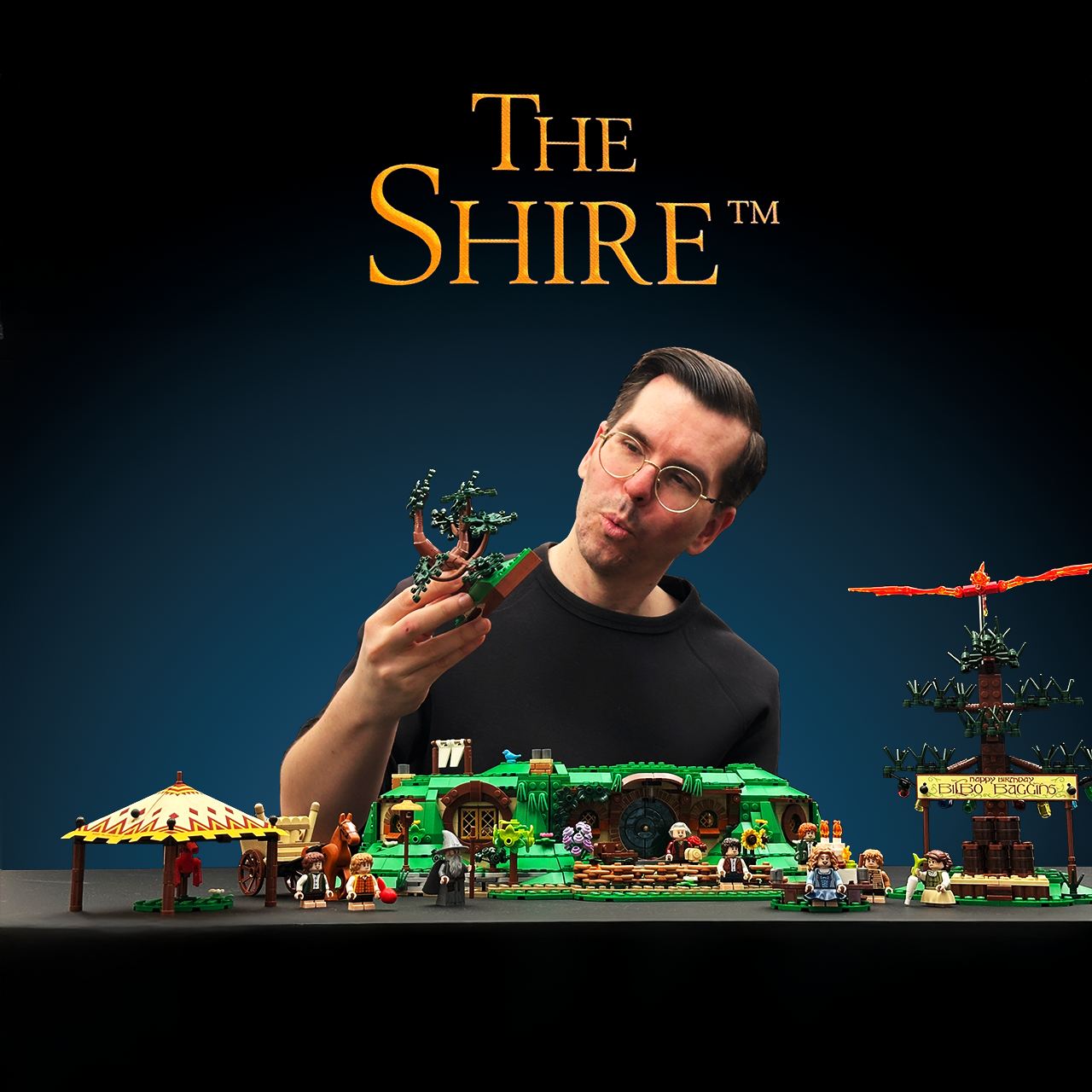If you’re a LEGO Lord of the Rings fan, chances are you’ve been keeping an eye on the latest set based on The Shire—specifically Bag End, Bilbo Baggins’ iconic hobbit hole. Like many others, I was genuinely excited for this release. The Shire is such an essential part of Tolkien’s world, and the idea of finally getting a modern, detailed LEGO version had me counting down the days. But now that I’ve built it, I have to admit: it left me a bit disappointed. While it has its moments—some lovely details, a few smart building techniques—the overall experience, especially when it comes to price, didn’t quite live up to the anticipation.
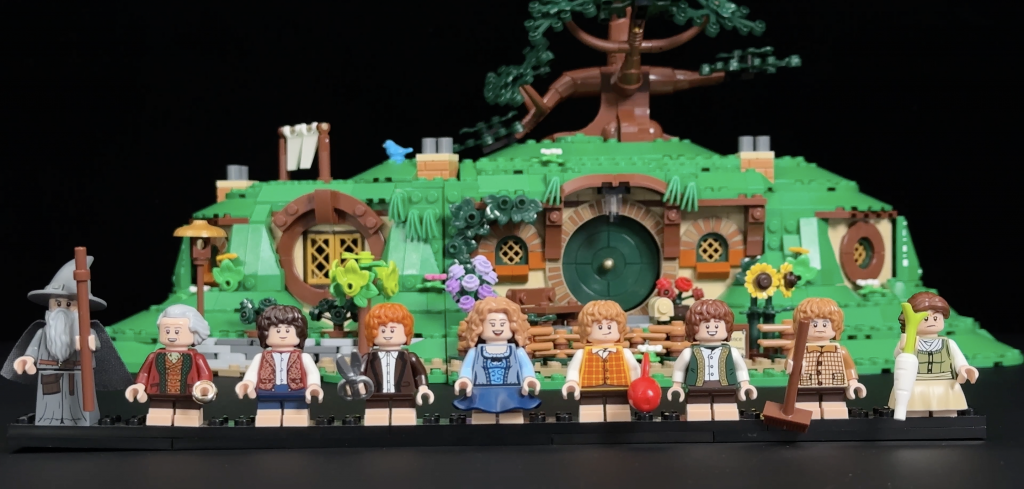
Let’s start with the minifigures. There are nine included in the set, which is quite generous and certainly helps bring Hobbiton to life. Gandalf the Grey makes his return with a single facial expression and his signature pointed hat and hair. The torso print is familiar from the Rivendell set, but his face print has been updated slightly. Bilbo Baggins, the birthday boy himself, comes with the One Ring and two facial expressions, paired with a nicely detailed torso. Frodo appears in party attire, and for once, he’s smiling—departing from the usual tormented expressions we’ve seen in the past. All three characters use the seated-style, non-articulated short legs that also featured in Rivendell.
Sam and Rose are also included, with Rose making her LEGO debut. She comes with a new molded skirt piece and dual-sided face print. Sam, too, has two expressions, giving you more room for storytelling. Merry and Pippin are particularly fun additions, each featuring alternate faces showing the moment they accidentally ignite Gandalf’s dragon firework—definitely a fan-pleasing touch. Rounding out the lineup are the Proudfoot couple, who briefly appear as Gandalf arrives in the Shire. It’s a strong cast overall and one of the high points of the set.
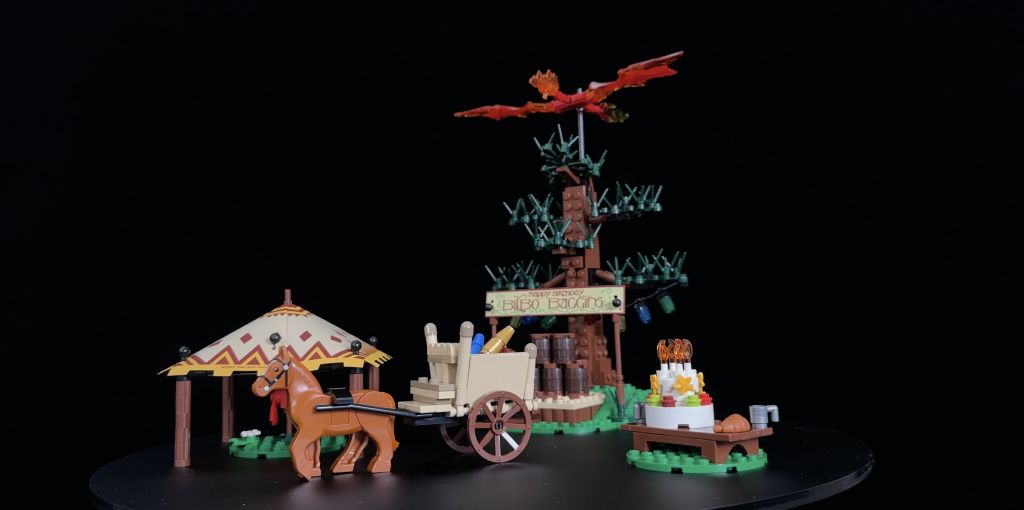
Moving on to the side builds, these do a good job of capturing the festive atmosphere of Bilbo’s eleventy-first birthday party from The Fellowship of the Ring. Gandalf’s fireworks carriage is particularly well done, complete with colorful fireworks in the back and a clever use of jumper plates that allows two minifigures to sit side by side. The birthday table is a small but sweet build, topped with a tall cake, jars, and a croissant—an unusual but charming detail. There’s also a party tent made from a printed cloth piece, hiding a firework that transitions from green to black when launched. A small firework dragon build soars overhead, cleverly supported by a transparent rod. The largest of the side builds is the stage for Bilbo’s farewell speech. It includes a “Happy Birthday Bilbo Baggins” banner and a very sparse-looking tree that seems more burnt than blooming. Still, the party lights and the rotating mechanism that allows Bilbo to vanish mid-speech are a fun and functional nod to the film. The side builds are full of charm, but their lack of integration with the main structure leaves them feeling more like scattered accessories than part of a cohesive display.
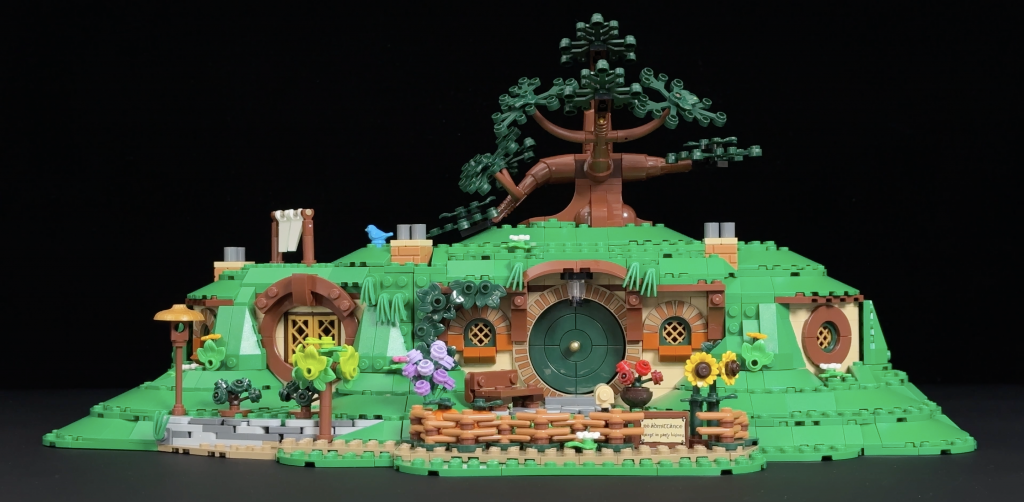
Now let’s get into the main attraction: Bag End itself. Unfortunately, the color palette was the first thing that threw me off. The bright green chosen for the roof is quite bold and, in my opinion, visually overwhelming. A more muted or natural green might have done a better job capturing the cozy feel of Hobbiton. As for the build, the curved roof is made using large slope pieces, which come across as overly smooth and artificial. I found myself wishing for more texture, layering, and greenery to evoke the overgrown, earthy charm of the Shire. The left side features some bushes and plants, but not nearly enough to make the build feel lush. That said, the stone retaining wall and the boomerang-piece fence are delightful little highlights that show LEGO’s clever side. The front gate includes the iconic “No admittance except on party business” sign, presented as a sticker. Elsewhere, printed tiles add personality and storytelling to the exterior.
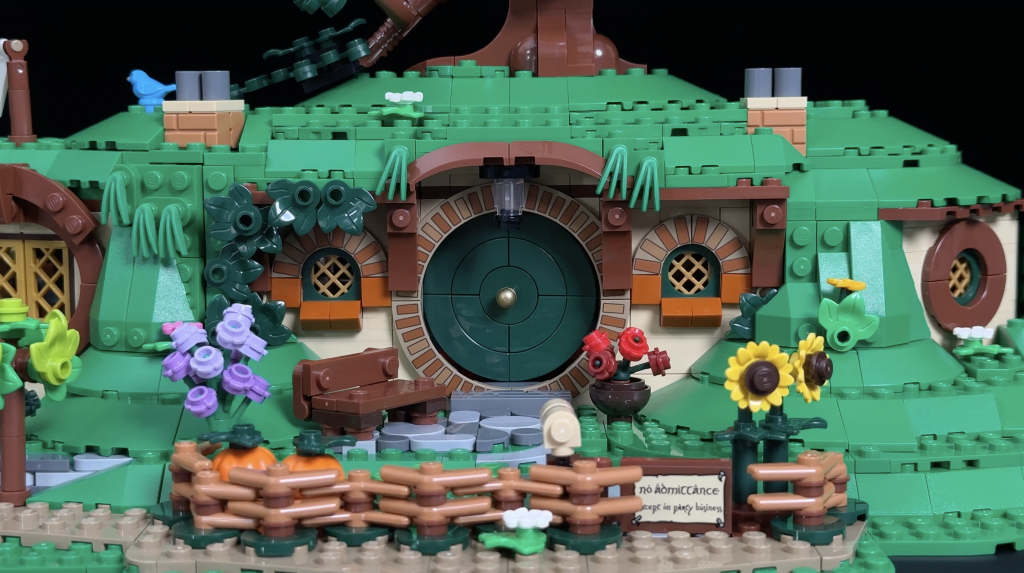
Closer to the entrance, there are some charming features—sunflowers, a small vegetable garden, and a bench where Gandalf and Bilbo once sat for a quiet smoke. But the right side of the exterior feels empty and a bit neglected, with not much to explore. It’s a missed opportunity, especially given the potential of the landscape. Still, the round green door and its flanking windows are beautifully executed and probably the most recognizable—and satisfying—part of the entire set. On the roof, you’ll find chimneys, a clothesline, and another tree that, while not perfect, is better designed than the one by the party stage.
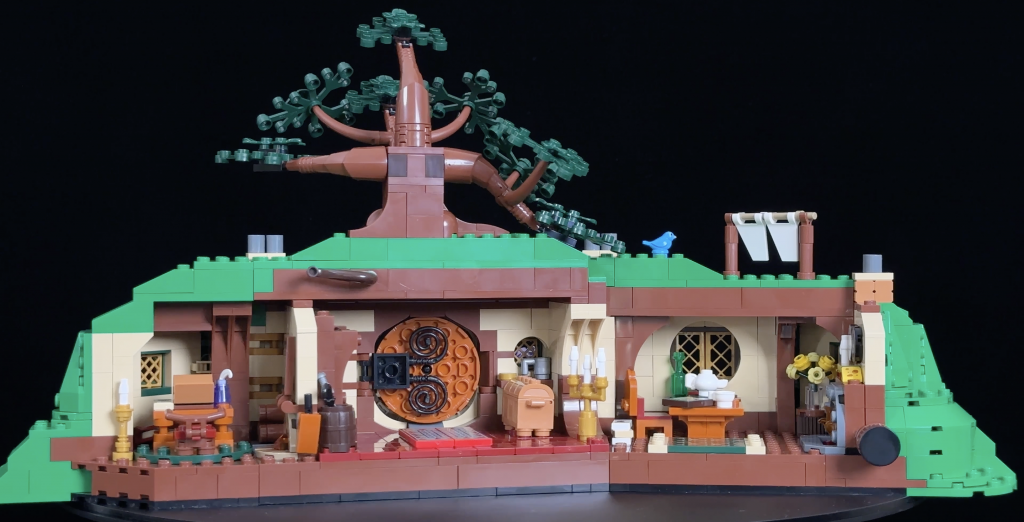
The interior of Bag End offers more to enjoy. The set has an open back, typical for display builds, and is divided into three sections. The middle roof portion is removable for easier access. However, the right side of the roof feels oddly unfinished, almost as if something was left out by mistake. Inside, the front entrance features some lovely touches: whip elements as decoration, a cabinet with a coat hanger, and a treasure chest hiding Frodo’s mithril shirt, represented by a stickered tile. Two printed rug tiles add warmth and detail to the floor.
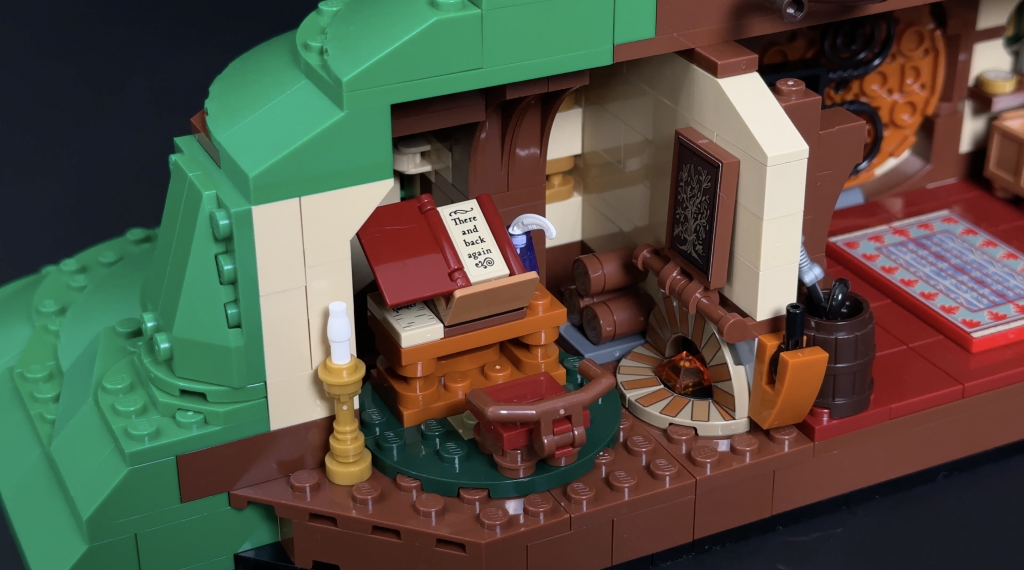
Bilbo’s study, on the left side, includes a book titled There and Back Again, with a stickered cover and Tolkien’s signature script. You’ll also find Bilbo’s quill, as well as the deed and contract transferring Bag End to Frodo—nice little bits of storytelling. A fireplace here uses clever techniques and continues the visual style introduced outside with matching printed tiles. On the right side of the build is the dining room. The angled floor design adds a nice architectural touch, and the table holds a tea set and a map of the Lonely Mountain. The chairs are creatively built, but they’re not secured to the floor and tend to fall over, which can be a bit annoying. Scattered items contribute to a lived-in atmosphere, and there’s a small portrait above the fireplace of Bilbo’s parents—a subtle but thoughtful nod to the lore.
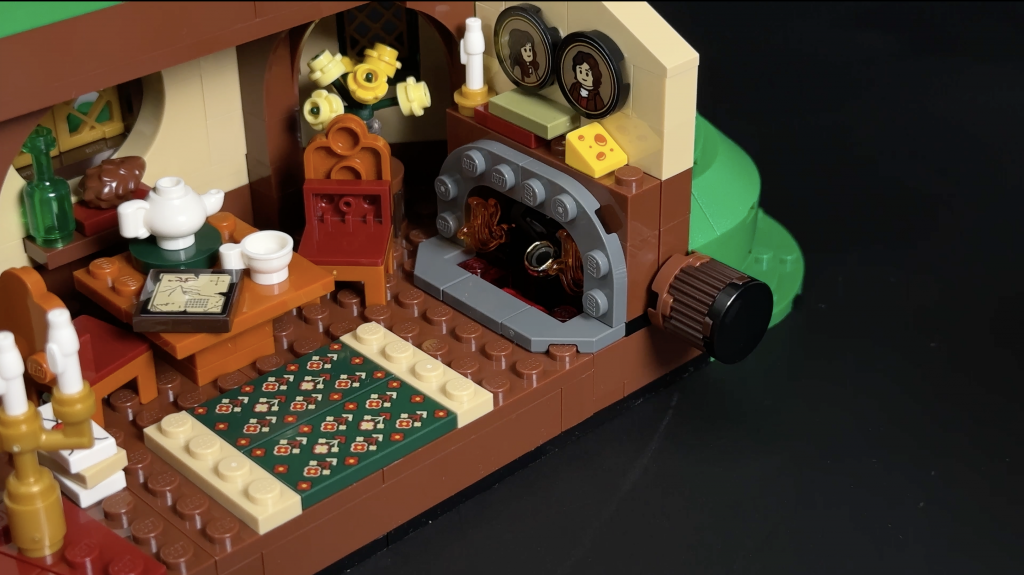
One standout feature is the magical fireplace mechanism. Inspired by a moment from The Fellowship of the Ring, turning a round brick reveals the One Ring hidden behind an envelope thrown into the fire. It’s a very clever play feature—simple, but cinematic—and a highlight of the build.
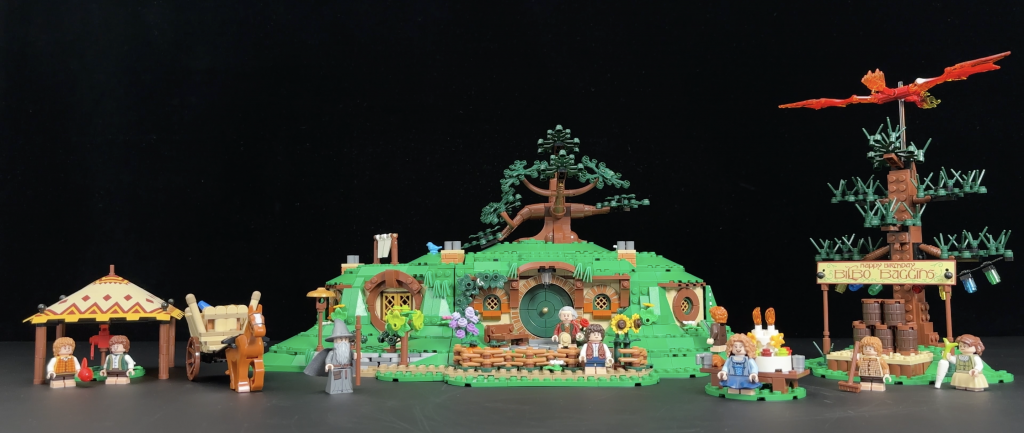
But then, we need to address the price. This set costs $270 USD or EUR, or £230 in the UK. For 2,017 pieces and nine minifigures, that price feels hard to justify. For almost the same cost, you could buy the new Beauty and the Beast castle, which includes nearly 1,000 more pieces and an equally strong minifigure lineup. It really makes you question how the pricing was determined. The set comes with three instruction manuals—two for the main build and one for the side builds. And if you were lucky enough to buy early, you may have received the Sméagol and Déagol gift-with-purchase, which vanished almost instantly after release.
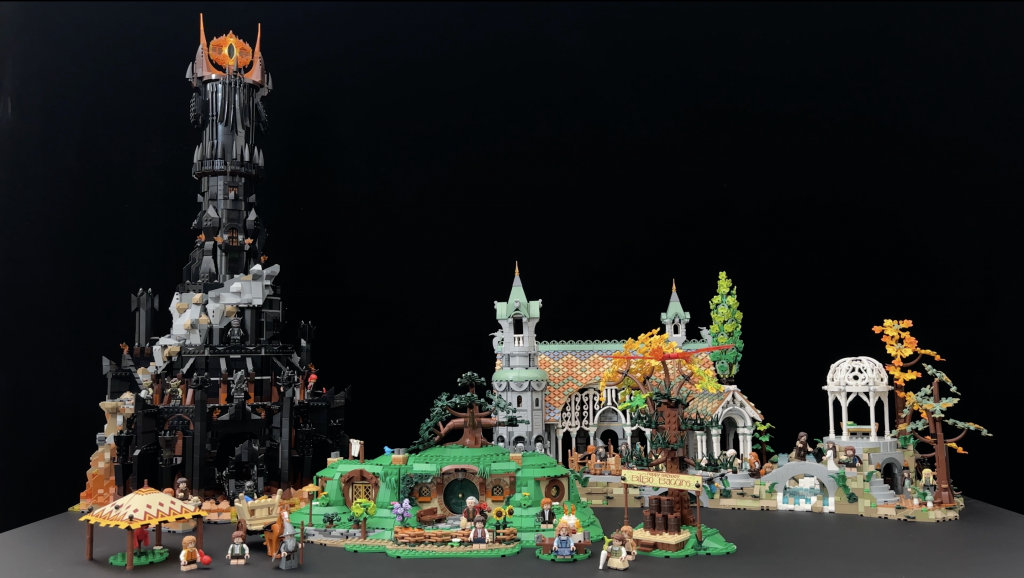
When compared with other sets in the LEGO Lord of the Rings line, The Shire unfortunately falls short. It doesn’t come close to the grandeur and elegance of Rivendell, and it’s not even in the same league as Barad-dûr. Despite some charming elements and a few clever tricks, this set didn’t meet my expectations. It feels overpriced for what you get, and the build itself, while enjoyable in moments, is pretty straightforward and lacks the complexity or wow factor you’d hope for in a premium adult-targeted set.
There are elements I genuinely liked—the interior is cozy and well-designed, and the entrance is spot-on. But overall, the build missed the mark for me. Personally, I would’ve been happier if they had skipped most of the side builds and focused more on refining Bag End itself. As it stands, I can’t recommend this set at full price. Unless it’s significantly discounted, you might want to pass on this one. Hopefully, LEGO takes fan feedback into account and refines future entries in the theme—because Middle-earth deserves the very best.
Support my work by purchasing your LEGO sets using my affiliate links (Lego.com) or amazon.com.
